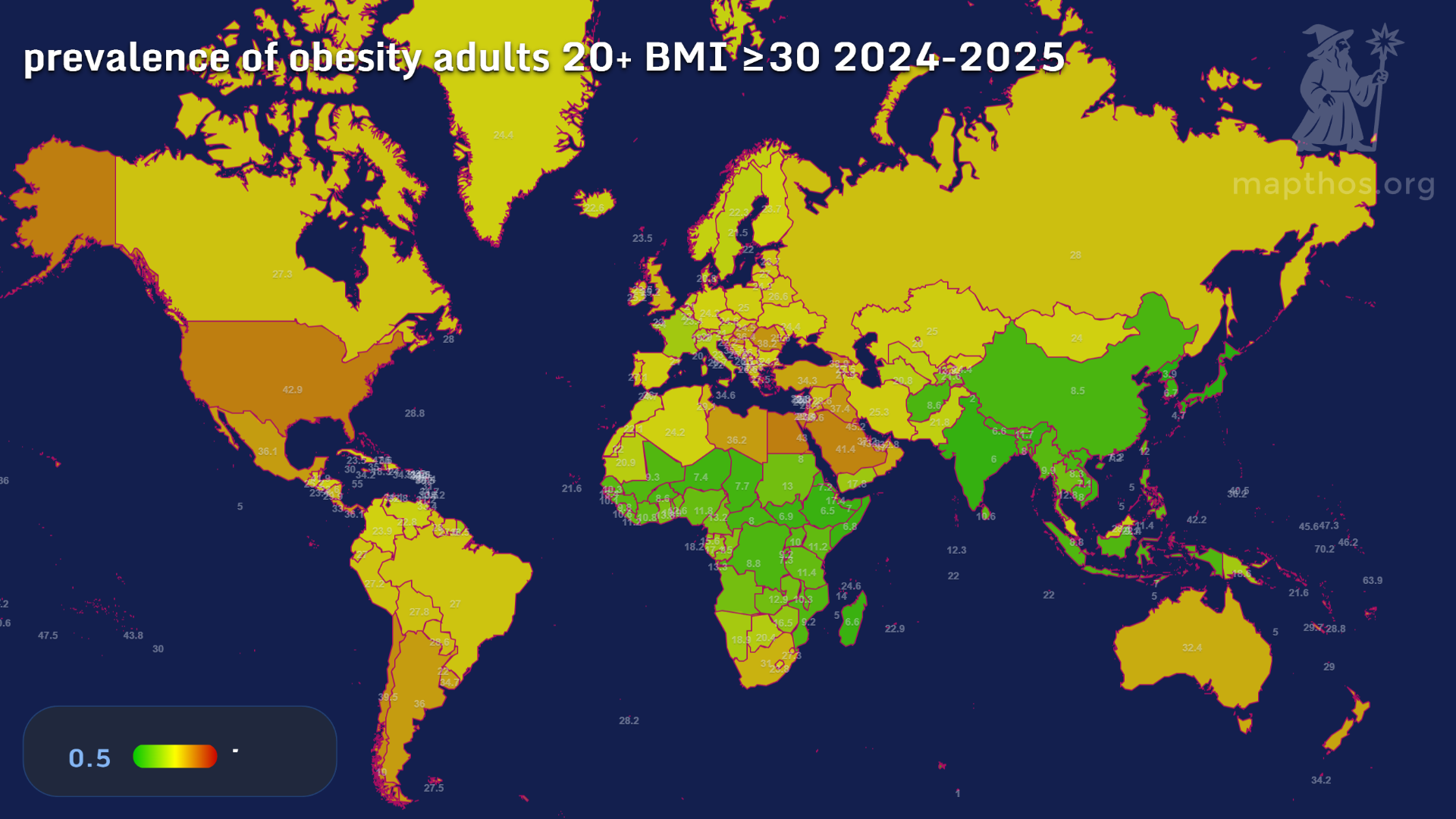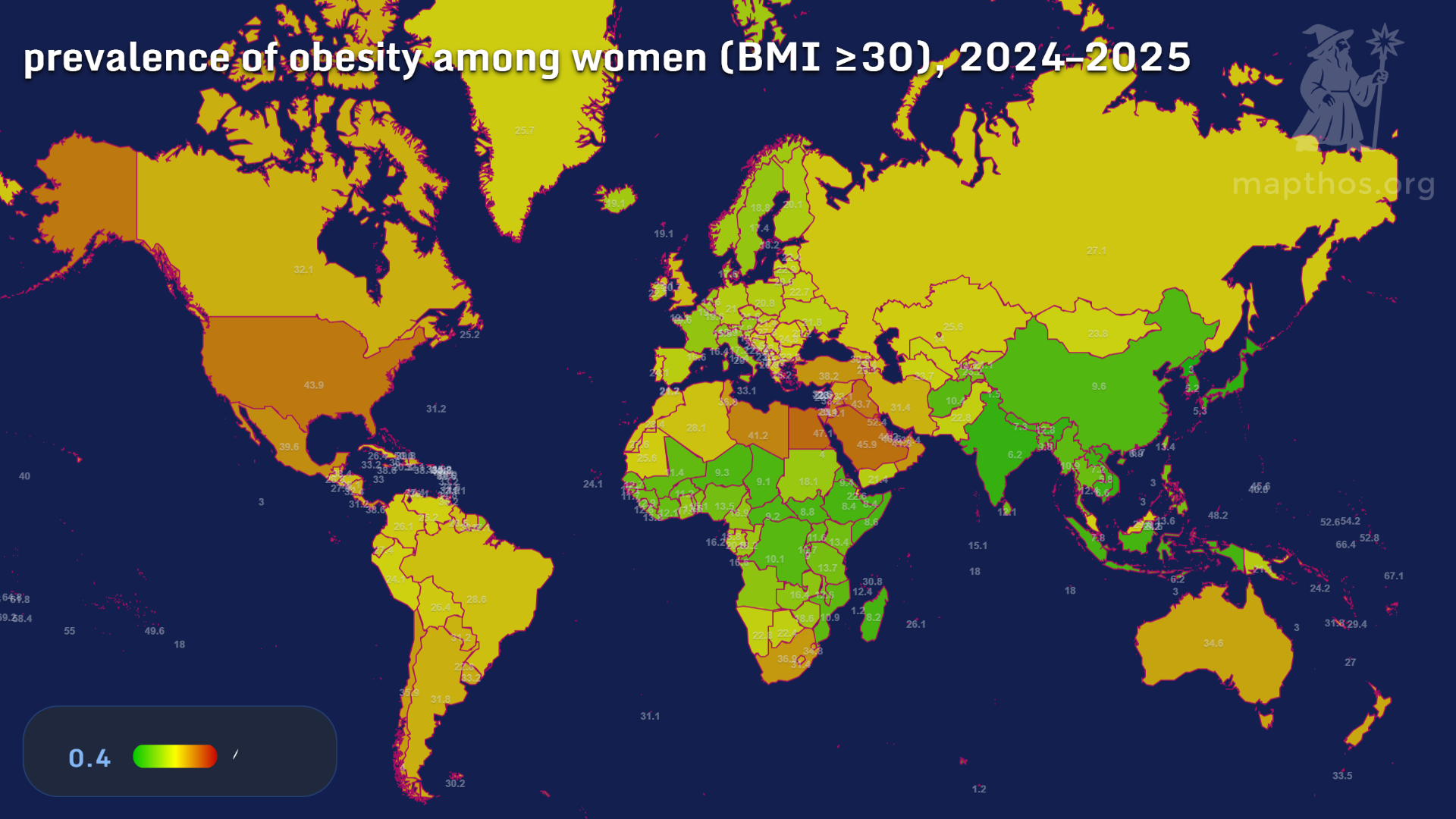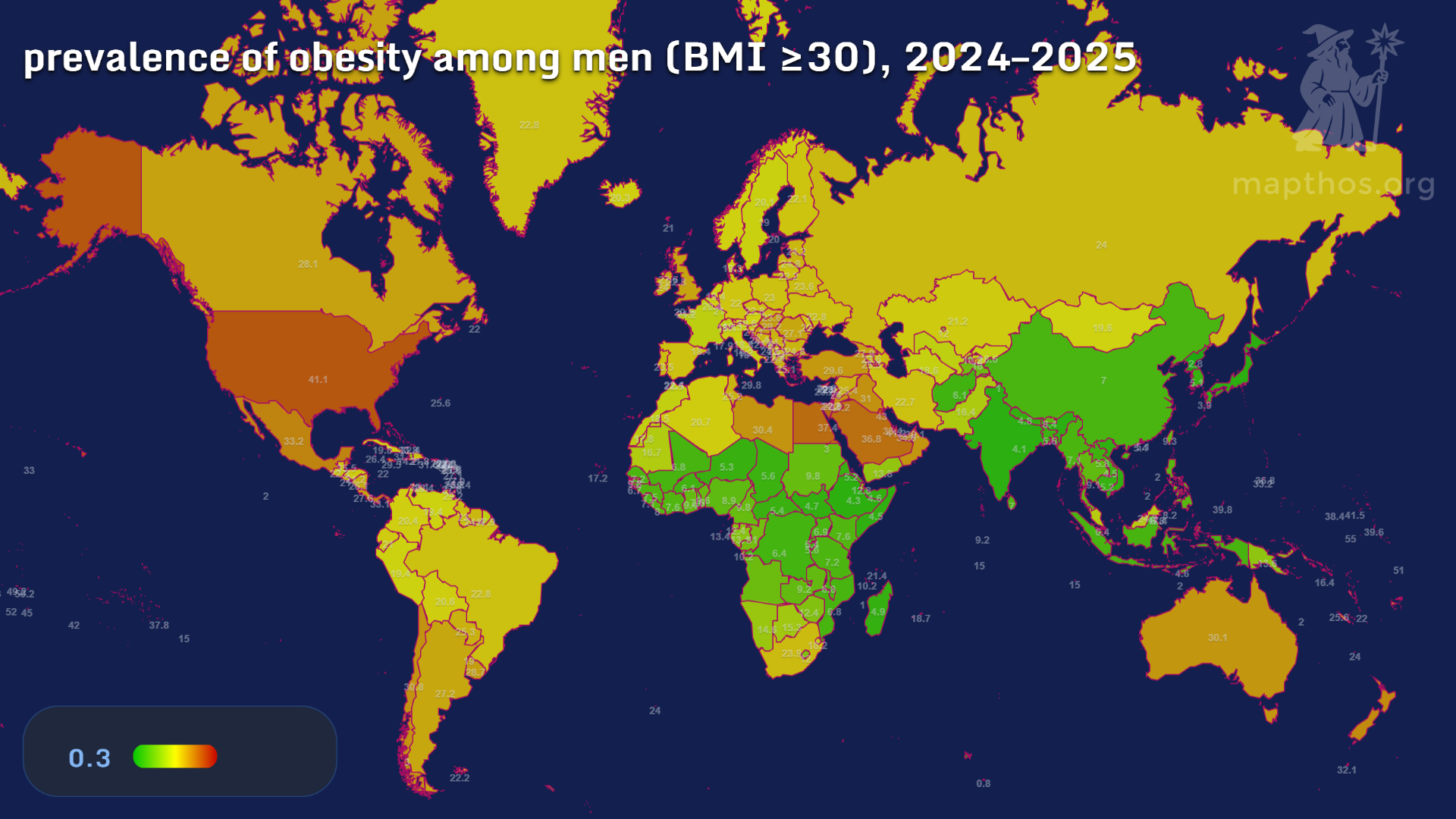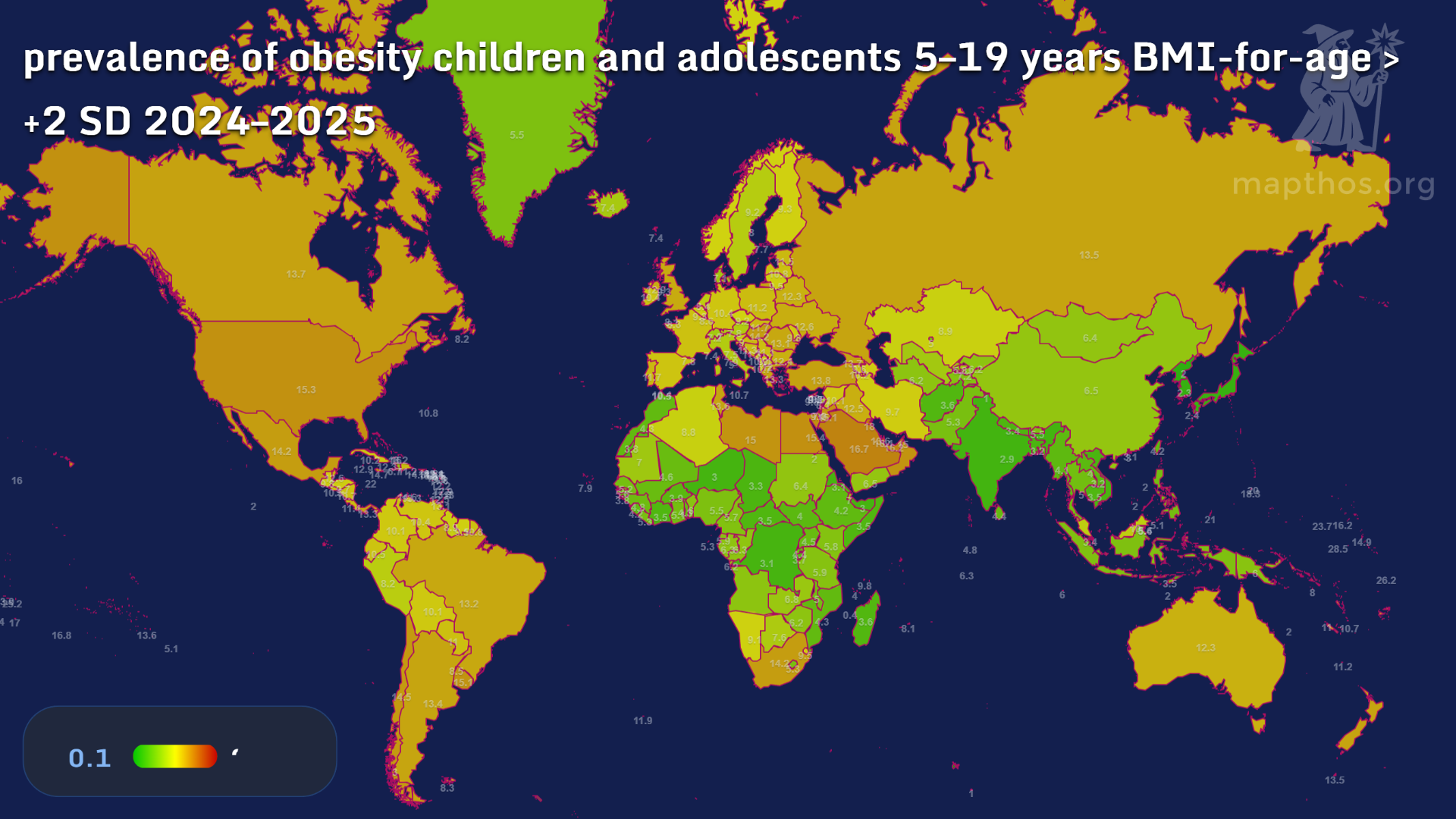🧭 The Weight of Nations: Mapping Global Obesity in 2025

The shape of humanity is changing — not just metaphorically, but literally. Obesity, once a problem of the affluent, now spans continents and classes. In 2025, MAPTHOS global health data visualizes how weight, wealth, and well-being intersect across nations.
These maps reveal more than just statistics — they outline the contours of modern lifestyles, urban diets, and deep inequality.
🌍 Global Overview: A Growing Challenge

In 2025, over 1 billion adults worldwide are classified as obese (BMI ≥ 30). The United States, Mexico, and parts of the Middle East show the highest prevalence, exceeding 40% of adults. Meanwhile, large regions of Sub-Saharan Africa and South Asia remain below 10%, though rates are climbing fast.
Obesity has become a map of modernization: it follows highways, supermarkets, and screens — more than it follows genes.
👩 Women and Weight: The Hidden Epidemic

Women consistently show higher obesity rates than men in most countries — a reflection of biological, cultural, and economic forces.
- Across North America and the Middle East, more than 40% of women are obese.
- North African nations such as Egypt, Libya, and Morocco exceed 35%.
- Sub-Saharan Africa and Southeast Asia show lower rates, but growing urbanization is changing that.
👨 Men and Modernity

Male obesity tracks industrialization and sedentary work patterns.
- The U.S. and Gulf countries lead with male obesity rates around 40%.
- European nations hover between 25–30%, while East Asia remains below 15%.
- Africa and South Asia remain leaner, though lifestyle shifts are emerging with rising incomes.
🧒 Childhood Obesity: The Next Generation’s Crisis

Perhaps the most alarming trend lies in the youngest generation. Childhood obesity now affects over 150 million children globally, doubling since 2000.
- North America and Southern Europe top the charts, with rates above 15%.
- Middle Eastern countries such as Kuwait and Saudi Arabia show similar levels.
- In Africa and South Asia, the numbers remain low — for now.
⚖️ A Tale of Two Trends
The world’s obesity maps reveal two intertwined realities: 1. Economic growth increases obesity — through diet, automation, and urban living. 2. Poverty also sustains it — via cheap calories and food insecurity.
This duality means that the future of global health is not about wealth or poverty, but balance — between energy in and energy out, between tradition and convenience, between awareness and action.
💡 Seeing the Data, Changing the Pattern
Visualization turns invisible health burdens into shared awareness. With MAPTHOS, researchers, journalists, and policymakers can compare global health datasets, visualize inequality, and trace the evolution of lifestyle diseases in real time.
👉 Explore more at app.mapthos.org
See the world. Map better. Dream big. 🌍✨